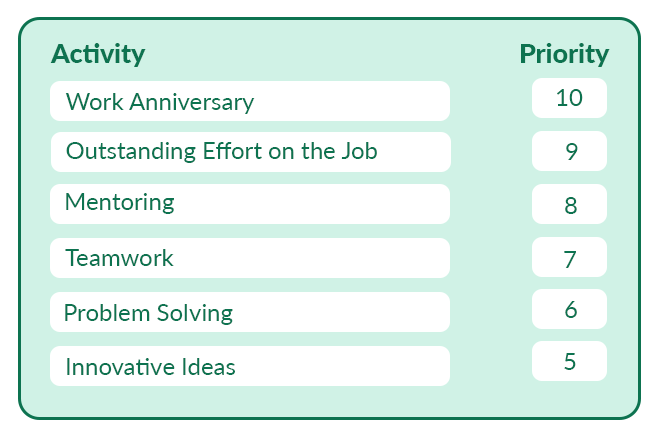
There’s no question that a little employee recognition can lead to a big morale boost. After all, who doesn’t like to feel appreciated at work?
Research bears this out. Employees who are regularly recognized have a higher level of job commitment, with nearly two-thirds (65%) admitting that feeling recognized would reduce their desire to job hunt, according to a February 2022 survey by Achievers Workforce Institute.
Gartner also reports that a well-designed recognition and rewards program can drive an 11.1% increase in average employee performance.
Whether you’re hoping to boost your team’s morale, your organization’s performance, or your company’s ability to attract top talent, employee points reward programs are a great way to show your appreciation and incentivize your staff.
READ MORE: How to Decide Between Instant Rewards, Sweepstakes, and Points Programs
Points-based rewards are inherently familiar and motivating. Most people can relate to credit card points, airline miles, and video game leaderboards. But how can you implement this kind of program at work?
Here are four simple steps to launch your own program.
You may already have lots of ideas about which kinds of activities will earn your employees points. But it’s important to take a step back and first define the mission statement for your employee points reward programs.
Are you trying to keep employees happy so they don’t leave in the Great Resignation? Are you trying to encourage peer-to-peer recognition? Are you trying to incentivize better productivity and performance?
To get clear on your goals, it’s a good idea to gather a broad range of employees — leaders, key stakeholders, and individual contributors — for their input.
Begin by asking everyone to name words that they associate with the broader mission. Once you have a list, you can use a free word cloud generator to see which key themes emerge.
Next, you can draft your mission statement by weaving in the most popular and relevant words from your list. Keep your mission statement simple — it should distill the primary goals of your program in two sentences or less.
The final step? Share the mission statement with your broader team for feedback, especially ways to improve it. Then finalize it and move on to step 2.
After you have your mission statement, consider your target audience, namely your employees. What kind of activities do you want them to engage in to earn points?
Brainstorm some activities or milestones your company can recognize. Think about the kinds of on-the-job behaviors you’d like to reward.
Once you have a good list, prioritize them so you can determine how many points each one will be worth later on. To do this, rank each of the activities you have written down in priority order from 1 (least important) to 10 (most important). For example:

Now that you’ve defined the employee behaviors you want to reward, your next step is to identify how many points to distribute for each activity or milestone.
Begin by establishing a budget, say, $1,000 per month. To determine how much your points are worth, assign a value per dollar. If you choose 10 points per dollar, for example, your monthly budget would be 10,000 points, worth $1,000.
Below is a sample worksheet you can use to calculate the points per activity, partly filled out based on the previous example. Consider the priority and value of each activity, and then estimate how many times you expect to see that activity completed each month.

Your final step is to officially launch the program with an announcement to your employees. To ensure the program is a success, you’ll also want to:
For more pointers, download A Practical Guide to Building a Points Reward Program.